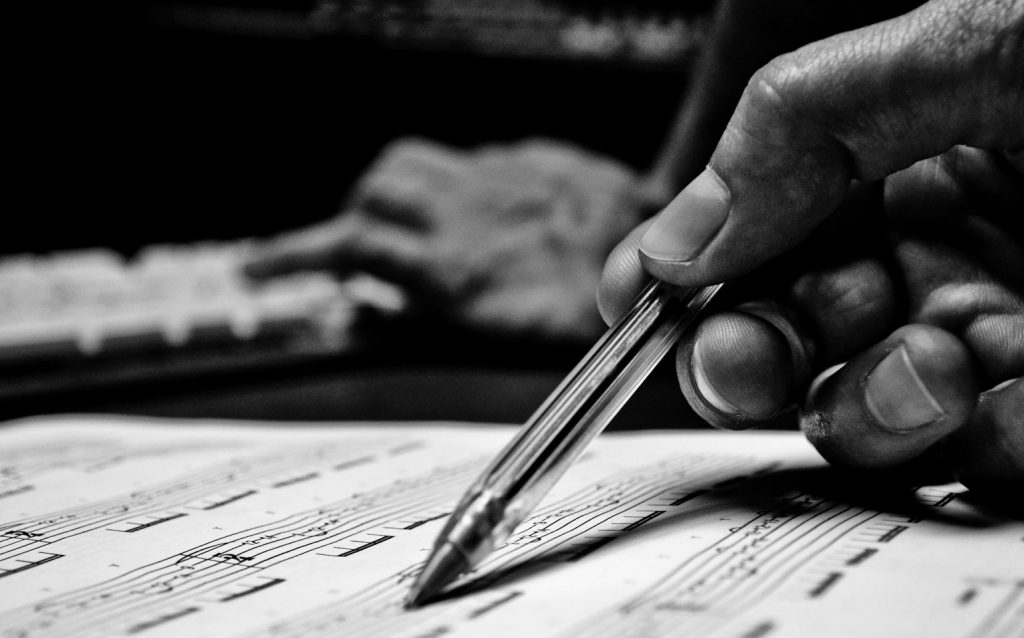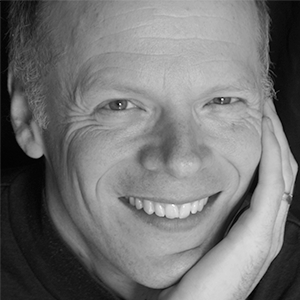Making Words Sing
As a composer, the questions I’m most often asked are: How do you make a living? How do you write music? What’s the difference between an opera and a musical?
To answer the first: You call this a living?
As for the second: the recipe for writing music has yet to be found. I teach composition to undergrads at the University of Toronto—people who are in their late teens and early twenties and are at the beginning of their careers. The process is anything but systematic. It’s a mix of following your nose, trial and error, careful listening, and sheer doggedness. When in doubt, borrow from the masters—or steal from them, according to Stravinsky.
But a little window opens up onto composing when we talk about song.
Our world overflows with songs. Many of us live our lives with songs pumping into our ears; we walk, run, drive, fly, work, play, and love to songs. They are the air we breathe. We hear songs from within the womb, and they don’t stop until the angelic choirs are ready to chant us into the next world.

The Overcoat. Photo by Dahlia Katz
And yet we rarely stop to think how profoundly complex simple songs can be. They unite words and music, reconciling our rational selves with our intuitive, emotional selves, creating tiny models of wholeness and integration. Songs transcend our individual isolation when we listen together, or, better yet, sing together: studies show that singing in groups releases oxytocin, a hormone that enhances pleasure and social bonding (and which is released during orgasm).
How then to marry words and music? I start with the words. Words have physical and spiritual dimensions, bodies and souls—just like people. And, just like music, words have grace, colour, rhythm, momentum, melody; they breathe, they flow, they move. The art of composing songs begins with finding the right words: words with music inside them, waiting to be set free; words that are worth singing about. For millennia, the favourite lyrics for songs have concerned love, war, death, and God. Perhaps there is something overwhelming about these subjects, and perhaps feeling overwhelmed makes us burst into song, to give our feelings their proper weight. The word “enchantment” is derived from chant; it conjures up song’s magic powers, its ability to weave spells, to soothe passions or inflame them. Religion is unthinkable without music—it could scarcely exist without chanting and singing and ringing of bells. The Babylonian Talmud (ca. 500CE) says: “anyone who reads the Scripture without a melody … of him the Scripture says, ‘What, did I give them laws that were no good?’”

The Overcoat. Photo by Dahlia Katz
The relationship of librettist and composer is crucial to making vocal music come alive. Some like to play both roles, as Wagner does in opera, and Sondheim in musicals. I prefer to collaborate. A writer brings experience and expertise in wordcraft and drama, as well as a differing point of view. They have crafted their words with music in mind, with the rhythm, drive, and urgency I need to find music in them. Music loves to move! It needs very few words to go where it wants; too many words will weigh it down or stop it in its tracks. This means that the writer must be flexible. Libretti usually go through many changes and cuts. When I began working on The Overcoat: A Musical Tailoring, an adaptation of Nikolai Gogol’s classic short story, librettist Morris Panych had already been living with its story and characters for twenty years, which made for a clear and concise libretto. This made my job much easier.
For example, in the opening scene, the chorus sings a ditty that begins: “The only way a person counts, sometimes, is by counting. The individual often never amounts to more than he’s amounting.” The key word here is “counting,” something that music does very well: the melody ticks away like a clock, twice per second, taking little steps down at first, then back up a little higher, then back down again to a cadence. A very simple nursery tune, taking its lead from the playful and punning words.
Two scenes later, the chorus sings: “Akakiy Akakiyevich. Never mind the fear and loathing. All you really need is clothing. The elements are all that really matter to you. Don’t count on people, when a decent overcoat will do.” They warmly embrace the protagonist, Akakiy, with their soothing, maternal voices, while he dreams of how his longed-for overcoat will warmly embrace him in the face of winter cold. The melody is simple, almost a lullaby, full of longing and wistfulness. We hear how his mother might have sung lovingly to him when he was small. We relive (consciously or not) our own small childhoods, with all their wistful longings, and perhaps our empathy is triggered—something else music does beautifully—raising Akakiy from a hapless schlemiel to a human being. He has touched our feelings and now we care about him.

The Overcoat. Photo by Dahlia Katz
And that brings us to the last question: what’s the difference between an opera and a musical?
I am constantly amazed by the appetite of audiences for musicals and operas. People get emotionally invested in them. The fervour of true fans is nearly religious, and when musicals or operas really click, they connect to people like no other art form. In 2005, I wrote an opera for young children called Elijah’s Kite, with words by Camyar Chai; it was produced by Tapestry Opera with the Manhattan School of Music and played in New York, Toronto, and B.C. At first I wondered whether children would get the medium: those operatic voices, all singing and no talking, the exaggerated gestures. Kids are a tough audience: they can spot something phoney a mile away and will let you know. Yet they were the perfect opera audience. Think about it: at recess, children shout, sing, jump, dance, imitate, gossip, put on acts and airs. Singing, dancing, acting—kindergarteners are the original triple threats! And look outside the West, to Asian or African or Indigenous cultures: most of them know no division between music, dance, theatre, and ritual—let alone between operas and musicals.
The usual assumptions about the two mediums are up for grabs. Is opera all sung? Two of the most beloved operas, Carmen and The Magic Flute, have long passages of spoken dialogue. Are operatic stories and characters lofty? Not in those two operas, nor in many others. Is it in a foreign language with surtitles? Britten, Purcell, myself, and many others would beg to differ.

The Overcoat. Photo by Dahlia Katz
The voices, though, are distinct. A trained operatic voice is a marvel of athleticism, able to reach the back of huge halls without amplification. You might say that opera features acting singers, while musicals feature singing actors. You go to opera to gorge on gorgeous voices, but you go to music theatre for the theatre. By this reasoning, since all eleven singers in Panych’s latest version of The Overcoat are trained in opera, it must be an opera. But wait: some of those singers have also appeared in Gilbert and Sullivan, in West Side Story, Threepenny Opera, The Music Man. Now what? Perhaps the line is not so clear-cut.
More and more operas are being written on contemporary subjects using words and music that speak to the rhythm of our time. These operas are being produced with more sophisticated theatrical values in their staging, lighting, and design, making for a complete theatrical experience, one as equally satisfying as a play. Emerging artists are founding new opera companies dedicated to bringing the medium into the 21st century. We may live in times that are changing faster than ever, yet we are still catching up with the unbounded potential of our most ancient mode of expression: singing. The distinction between opera and music theatre is becoming less and less relevant. What still resonates is the soul of the piece, the spirit that makes it something greater than the sum of its words and notes.
And these, in a 1400-word nutshell, are my three answers.









Comments